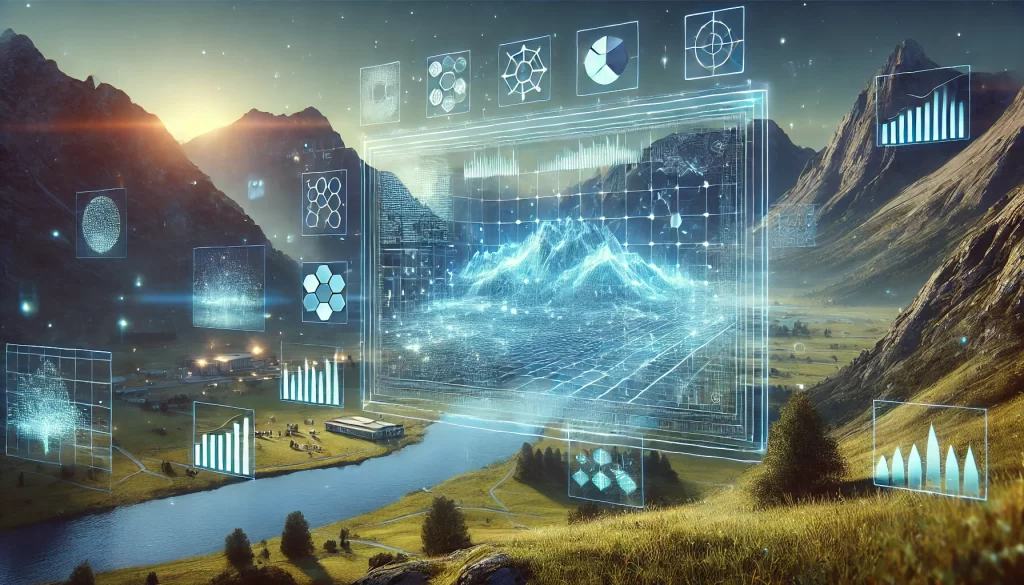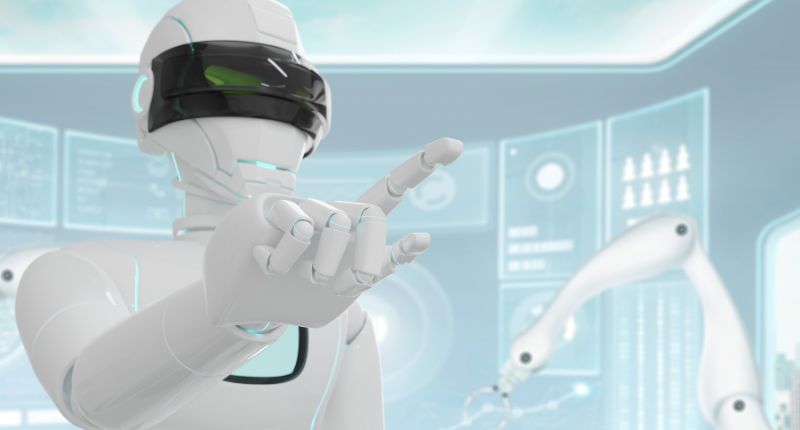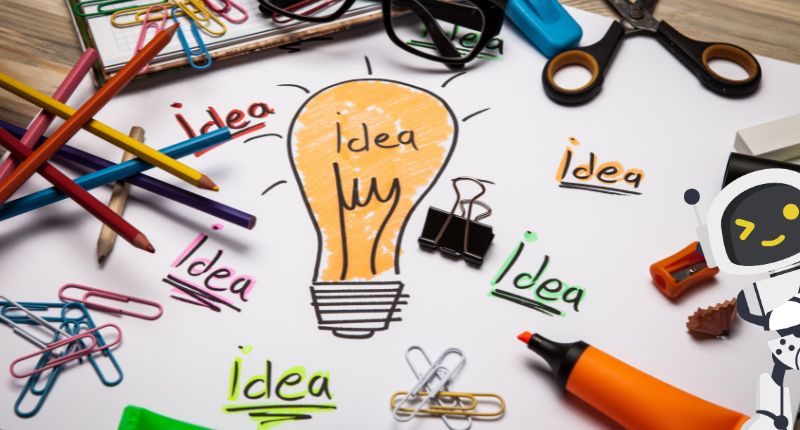Artificial Intelligence (AI) has made significant strides in various fields, including image recognition, generation, and processing. One of the core elements in these advancements is how AI tools calculate and interpret image objects. Understanding the process of how AI tools calculate and interpret images is fundamental for anyone working in computer vision, machine learning, or AI-driven content creation. In this comprehensive blog post, we will explore how the image object is calculated in AI tools, focusing on key concepts, algorithms, and methods that power this process. Let’s explore How the Image Object Will Be Calculated in AI Tools
What is an Image Object in AI?
Before we dive into the details of how an AI tool calculates an image object, let’s first define what an image object is in the context of AI. An image object refers to a distinct entity or feature in an image that the AI tool identifies, processes, and interprets. This could be anything from a face, car, tree, or even abstract features like textures and colors. These objects are typically identified using computer vision algorithms, which rely on mathematical models and statistical methods to extract meaningful information from digital images.
The process of calculating an image object involves several steps, including image preprocessing, feature extraction, object detection, and classification. AI tools, especially those built for computer vision tasks, use these techniques to break down images into smaller, more manageable components that can be analyzed, understood, and manipulated.
The Role of Data in Image Object Calculation
AI tools rely heavily on data to learn and calculate image objects. The more data an AI tool has, the better it can understand and identify objects in images. This data is typically collected in the form of labeled images, where each image is tagged with the correct label or category for the objects it contains. For example, an image of a dog may be labeled with the word “dog,” helping the AI understand what a dog looks like in various contexts.
The process of training an AI model to identify image objects starts with feeding it large datasets of labeled images. These datasets may include millions of images covering a wide range of objects, backgrounds, lighting conditions, and other variations. The more diverse and comprehensive the dataset, the more accurately the AI tool can calculate and classify image objects in new, unseen images.
Image Preprocessing: Preparing Data for AI Models
Before an AI tool can calculate the objects in an image, the image itself must be prepared for analysis. This process is known as image preprocessing and involves several steps that help the AI model better understand the image.
1. Resizing and Normalization
One of the first steps in preprocessing an image is resizing it to a standard size. Images can vary greatly in dimensions, and AI tools typically require inputs of a specific size to work efficiently. Resizing ensures that the AI model can process images consistently, regardless of their original dimensions.
Normalization is another essential preprocessing step. Images often have pixel values ranging from 0 to 255, where each pixel represents the intensity of a color channel (e.g., red, green, blue). Normalization adjusts these values, scaling them to a range that is easier for the AI model to process, typically between 0 and 1. This step helps the model focus on patterns and relationships within the image rather than getting distracted by extreme intensity values.
2. Noise Reduction
Images can contain noise, which is unwanted variations in pixel values caused by various factors like camera limitations or environmental conditions. Noise can make it difficult for AI tools to accurately calculate image objects. Therefore, noise reduction techniques, such as Gaussian blur or median filtering, are often applied to smooth out the image and remove irrelevant information.
3. Edge Detection
Edge detection is another crucial preprocessing step that helps AI tools identify the boundaries of objects in an image. Techniques like the Canny edge detector or Sobel filter highlight the edges of objects by detecting rapid changes in intensity between adjacent pixels. This allows the AI model to focus on the contours and shapes that define the objects within the image.

Feature Extraction: Identifying Important Information
Once the image has been preprocessed, the AI tool needs to identify the key features that will help it calculate the objects within the image. Feature extraction refers to the process of identifying important patterns, shapes, textures, and other visual cues that can be used to differentiate objects in an image.
1. SIFT (Scale-Invariant Feature Transform)
SIFT is a popular feature extraction method that identifies distinctive key points in an image. These key points are points where the image’s texture or structure changes significantly, making them useful for identifying objects or tracking motion. SIFT can handle changes in scale, rotation, and lighting, making it a robust method for object recognition.
2. HOG (Histogram of Oriented Gradients)
HOG is another feature extraction technique commonly used in image analysis. It works by dividing the image into small cells and calculating the gradient directions (edges) within each cell. These gradients are then used to form histograms that represent the shape and structure of objects. HOG is particularly effective for detecting objects like faces and pedestrians.
3. Deep Learning Features
In modern AI tools, deep learning techniques like Convolutional Neural Networks (CNNs) have revolutionized feature extraction. CNNs automatically learn hierarchical features from images, starting with basic patterns like edges and textures and building up to more complex features like shapes and objects. This allows AI tools to learn features directly from the data, eliminating the need for manual feature engineering.
Object Detection: Locating and Identifying Objects
With features extracted from the image, the next step is object detection, which involves identifying the location of objects within the image and classifying them. Object detection is one of the most critical tasks in AI-driven image analysis, as it allows AI tools to understand the spatial relationship between different objects in an image.
1. Sliding Window Approach
In the sliding window approach, a small window (or region) is moved across the image, and the AI model checks each window for objects. This method can be computationally expensive because it requires scanning the entire image, but it has been a foundational technique in object detection.
2. Region Proposal Networks (RPN)
Region Proposal Networks (RPN) are a more advanced technique used in modern object detection algorithms. RPNs work by generating potential object regions (proposals) and then classifying these regions as containing objects or not. This method is more efficient than the sliding window approach and is used in state-of-the-art object detection frameworks like Faster R-CNN.
3. YOLO (You Only Look Once)
YOLO is one of the most popular and efficient object detection algorithms. Unlike traditional methods that scan the image multiple times, YOLO processes the entire image in a single pass. It divides the image into a grid and assigns bounding boxes and confidence scores to each grid cell. YOLO is known for its speed and accuracy, making it ideal for real-time applications.
4. SSD (Single Shot Multibox Detector)
Similar to YOLO, SSD is another real-time object detection algorithm that processes the image in a single pass. It uses a series of convolutional layers to predict object locations and classifications at multiple scales. SSD is a popular choice for detecting objects in images with varying sizes and aspect ratios.
Classification: Assigning Labels to Detected Objects
Once the AI tool has identified and located the objects in an image, the next step is classification, which involves assigning a label or category to each detected object. Classification is typically performed using machine learning algorithms like decision trees, support vector machines (SVM), or deep learning models like CNNs.
1. Convolutional Neural Networks (CNNs)
CNNs are the go-to model for image classification tasks. After detecting objects and extracting features, CNNs are trained to classify the objects into predefined categories. CNNs consist of multiple layers, including convolutional layers, pooling layers, and fully connected layers, which work together to learn and classify visual patterns.
2. Transfer Learning
Transfer learning is a technique where an AI model is pre-trained on a large dataset and then fine-tuned on a smaller, domain-specific dataset. This approach is particularly useful when there is limited labeled data available for training. Transfer learning allows AI tools to leverage existing knowledge and apply it to new tasks, improving accuracy and reducing the need for extensive training.
Post-Processing: Refining Results
After the AI tool has detected and classified objects, post-processing techniques are applied to refine the results and ensure that the output is accurate and meaningful.
1. Non-Maximum Suppression (NMS)
Non-Maximum Suppression (NMS) is a technique used to eliminate redundant bounding boxes. After object detection, multiple bounding boxes may overlap, each with a different confidence score. NMS eliminates all but the most confident bounding box for each object, ensuring that only one box is assigned to each object.
2. Bounding Box Regression
Bounding box regression is a method used to refine the location and shape of bounding boxes. This technique adjusts the coordinates of the bounding boxes to be more accurate, ensuring that the detected objects are tightly enclosed by the boxes.
3. Confidence Thresholding
AI tools often use confidence scores to evaluate the likelihood that an object is correctly detected. Confidence thresholding involves setting a minimum confidence score that must be met for an object to be considered valid. If the confidence score is below this threshold, the object is discarded.
The Future of Image Object Calculation in AI
As AI continues to evolve, so too does the methodology for calculating image objects. The technology is already making significant advancements, but there are still challenges to overcome. Innovations in deep learning, neural networks, and computer vision continue to shape the way AI tools interpret and process images. Let’s explore some of the future trends and developments in the field of image object calculation.
1. Advancements in AI Models and Architectures
AI researchers are constantly developing new and improved architectures for image processing tasks. Some of the most promising developments include the emergence of Transformer models in computer vision, such as the Vision Transformer (ViT). These models, which were originally designed for natural language processing tasks, have been adapted for image processing and offer a unique approach to object detection and classification. Unlike CNNs, which rely on local receptive fields, Transformer-based models use global attention mechanisms that allow the model to consider the entire image at once. This can improve performance, especially in complex images with many objects.
Another exciting development is the fusion of multiple AI models to create hybrid solutions. For example, combining Generative Adversarial Networks (GANs) with object detection models can allow AI tools to not only identify objects but also generate them in new and creative ways. These hybrid models could revolutionize industries like content creation, virtual reality, and gaming.
2. Real-Time Image Object Calculation
One of the biggest challenges in AI-based image object detection is processing speed. Real-time applications, such as autonomous vehicles, surveillance systems, or live video analysis, require image object calculations to happen almost instantly. While models like YOLO and SSD have already made strides in real-time object detection, there is still a significant need for faster and more efficient algorithms.
Future advancements in hardware, such as specialized AI processors like Google’s Tensor Processing Units (TPUs), and the optimization of software algorithms will likely push real-time image object calculation to new heights. These innovations will allow AI tools to process images in real time with minimal latency, opening up even more applications in areas like robotics, augmented reality (AR), and live video streaming.
3. Transfer Learning and Few-Shot Learning
Transfer learning and few-shot learning are two methods that can further enhance the efficiency and effectiveness of AI tools in image object calculation. Transfer learning, as mentioned earlier, allows AI models to leverage pre-trained knowledge from other domains. In the future, transfer learning will become more automated, reducing the need for extensive domain-specific training data.
Few-shot learning, on the other hand, is a technique that aims to enable AI tools to learn new tasks or identify objects with minimal data. In traditional AI models, vast amounts of labeled data are required for accurate training. Few-shot learning reduces this dependency by enabling the model to generalize from a small number of examples. This could dramatically improve AI’s ability to calculate objects in images in scenarios where labeled data is scarce or costly to obtain.
4. Multi-Modal AI Systems
In the future, AI systems will become more multi-modal, meaning they will be capable of processing and understanding multiple types of data, such as images, text, audio, and video. This could significantly enhance the accuracy and depth of object calculation in images.
For example, a multi-modal AI system might be able to not only detect and identify objects in an image but also understand the context in which those objects appear. By combining visual data with textual information (e.g., captions, descriptions), the AI could make more informed decisions about the objects it detects. This kind of contextual understanding could be particularly useful in fields like medical imaging, where the understanding of an image’s context is crucial for accurate diagnosis.
5. Explainable AI (XAI) in Object Detection
One of the challenges of AI-based image object calculation is the “black-box” nature of many machine learning models. While models like CNNs and YOLO are incredibly powerful, they often operate without providing much insight into how they arrive at their conclusions. This lack of transparency can be a barrier to the adoption of AI in critical fields like healthcare, law enforcement, and autonomous driving, where understanding the decision-making process is vital.
Explainable AI (XAI) aims to address this challenge by making AI models more transparent and interpretable. In the context of image object calculation, XAI methods could help users understand why certain objects were detected, how the AI identified them, and what features it used to make its decisions. This could improve trust in AI systems and encourage their use in high-stakes applications.
6. Ethical Considerations in Image Object Detection
As AI tools become more capable of calculating image objects, there are growing concerns about the ethical implications of this technology. Image object detection and recognition have vast potential in various industries, but they also raise important questions about privacy, bias, and fairness.
For example, facial recognition technology has been widely adopted in surveillance systems, but it has also been criticized for its potential to infringe on privacy rights. Additionally, studies have shown that some AI models exhibit bias, especially when trained on datasets that are not diverse enough. This can lead to inaccurate object detection or misclassification, particularly for underrepresented groups.
To address these concerns, AI developers are focusing on improving the fairness and transparency of their models. This includes using diverse training datasets, auditing models for bias, and implementing privacy-conscious approaches like federated learning, where data remains decentralized and never leaves the user’s device.
7. Augmented Reality (AR) and Virtual Reality (VR) Applications
The rise of Augmented Reality (AR) and Virtual Reality (VR) technologies is another area where AI-powered image object calculation is making significant strides. In AR, AI tools calculate image objects in real time to overlay virtual elements onto the physical world. This requires highly accurate object detection and tracking, especially in dynamic environments.
For example, AR apps like Snapchat and Instagram use AI tools to detect faces, objects, and surroundings to apply filters or create interactive experiences. In the future, AR could become even more immersive, with AI tools capable of recognizing and interacting with a wider range of objects in real-time.
Similarly, in VR, AI-driven object detection can enhance user experiences by accurately detecting and tracking virtual objects in a 3D environment. AI-powered object recognition will be essential in fields like virtual training, gaming, and remote collaboration, where users need to interact with complex virtual objects and environments.
8. AI in Healthcare Imaging
AI’s ability to calculate image objects is also revolutionizing the field of healthcare imaging. Radiology, pathology, and other medical fields rely heavily on images, such as X-rays, MRIs, and CT scans, to diagnose diseases and conditions. AI tools are increasingly being used to assist doctors in interpreting these images, identifying anomalies, and making more accurate diagnoses.
For instance, AI tools can detect tumors or lesions in medical images, classify them, and even predict their growth or potential malignancy. By calculating image objects with high precision, AI can help radiologists identify early signs of diseases like cancer, improving the chances of successful treatment.
Conclusion: How the Image Object Will Be Calculated in AI Tools
The future of image object calculation in AI is incredibly promising, with advancements in algorithms, hardware, and multi-modal AI systems paving the way for more efficient, accurate, and real-time object detection. As AI tools continue to improve, they will become indispensable in a wide range of applications, from autonomous vehicles and healthcare to entertainment and security.
However, with these advancements come challenges, particularly in terms of ethics, privacy, and bias. It’s essential that AI developers and researchers continue to prioritize transparency, fairness, and accountability to ensure that these tools are used responsibly.
Whether you are a researcher, developer, or enthusiast, staying informed about these ongoing advancements is crucial to understanding how AI tools will transform the way we calculate and interact with image objects in the years to come. The potential of AI in image recognition and processing is vast, and it will only continue to grow as new innovations and technologies emerge.
For a deeper understanding of AI’s impact across various industries, check out our comprehensive analysis on How Will AI Affect Education? Read more here.


